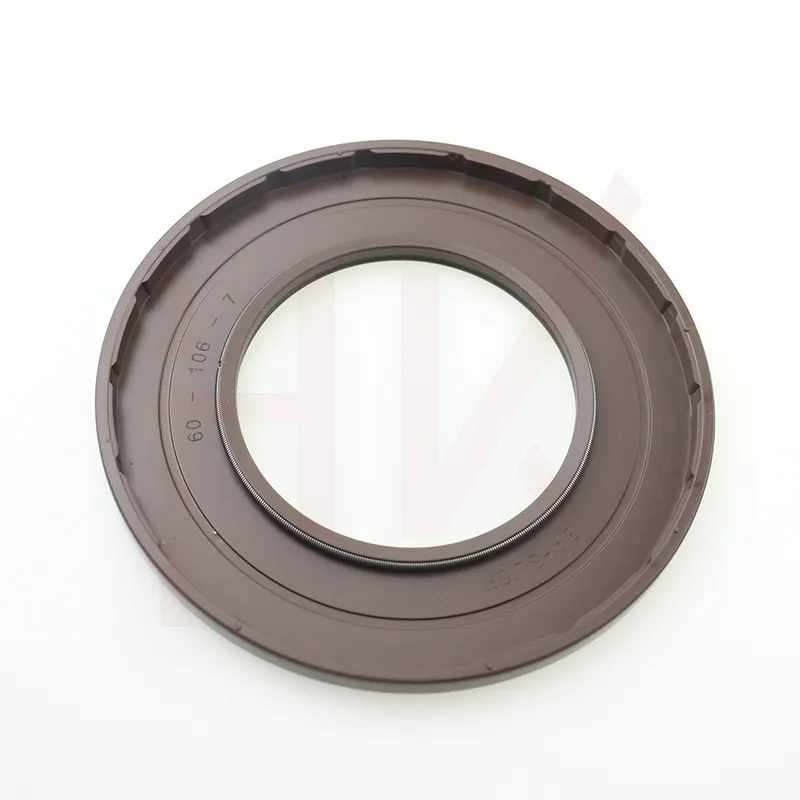Oct . 21, 2024 22:10 Back to list
Understanding the Functionality and Benefits of Single Acting Piston Seals in Machinery Applications
Understanding Single Acting Piston Seals Function, Types, and Applications
In the world of hydraulic and pneumatic systems, seals play a crucial role in maintaining system integrity and performance. Among these sealing solutions, single acting piston seals are particularly significant due to their unique design and functionality. This article delves into what single acting piston seals are, how they work, their types, and their applications across various industries.
What is a Single Acting Piston Seal?
A single acting piston seal is a mechanical component used to prevent fluid leakage between stationary and moving parts in hydraulic and pneumatic cylinders. Unlike double acting seals, which can seal on both sides, single acting piston seals are designed to seal in one direction. This means that they are typically used in scenarios where pressure acts only on one side of the piston, thus requiring sealing only in that direction.
The fundamental role of these seals is to ensure that the hydraulic fluid remains contained within the cylinder, allowing for smooth and efficient motion of the piston without loss of pressure or fluid. When a hydraulic system is pressurized, the seal compresses against the wall of the cylinder, forming a tight barrier that prevents leaks.
How Do They Work?
Single acting piston seals work by utilizing the pressure of the fluid to enhance the sealing effect. When pressure is applied from one side (the working side) of the piston, the movement of the piston exerts force on the seal against the cylinder wall. This compressive force ensures that the seal expands and conforms to the surfaces of the cylinder, creating a robust barrier that resists the fluid pressure.
The design of the seal allows it to be effective in high-pressure applications. The material composition, typically elastomers or thermoplastics, provides elasticity and resilience, enabling the seal to maintain its shape and sealing capability even under changing pressures and temperatures.
Types of Single Acting Piston Seals
There are various designs of single acting piston seals, each suited for specific applications
1. U-Cup Seals These are one of the most common types of single acting seals. They have a U-shaped cross-section, which provides a large sealing area. U-cup seals are versatile and can work in both dynamic and static situations.
2. O-Rings Although primarily used in static applications, O-rings can also be designed for single acting dynamic applications. They ensure a tight seal under pressure, and their simple geometry makes them easy to install.
single acting piston seal

3. Lip Seals These seals feature a lip that contacts the cylinder wall and is effective in preventing leakage. They can handle high speeds and pressures, making them suitable for demanding applications.
4. V-Rings A V-ring operates as a single acting seal due to its unique shape. It can accommodate a range of shaft sizes and provides reliable sealing performance.
5. Composite Seals Combining various materials, composite seals are engineered for specific needs, offering the advantage of increased durability and resistance to aggressive fluids.
Applications of Single Acting Piston Seals
Single acting piston seals find extensive use across numerous sectors, including
- Automotive In hydraulic brakes and steering systems, these seals prevent fluid loss and maintain system pressure. - Construction Machinery Heavy equipment like excavators and bulldozers utilize these seals to power hydraulic cylinders essential for movement and operations.
- Aerospace In landing gear and other hydraulic systems, single acting seals ensure reliability under varying pressures and temperatures.
- Industrial Machinery Pneumatic cylinders in automation and packaging sectors heavily rely on these seals for efficient operation.
- Oil and Gas Seals are critical in drilling and extraction equipment, where high-pressure fluids are common.
Conclusion
In summary, single acting piston seals are vital components in numerous hydraulic and pneumatic systems. Their ability to effectively contain fluids under pressure ensures the optimal functioning of machinery in various applications. Understanding their design, operation, and uses is essential for engineers and technicians who work to maintain and improve these systems. As technology advances, the ongoing development of sealing solutions will continue to enhance performance and reliability in industrial applications, making single acting piston seals an integral part of modern engineering.
-
TCN Oil Seal Metal Ring Reinforcement for Heavy Machinery
NewsJul.25,2025
-
Rotary Lip Seal Spring-Loaded Design for High-Speed Applications
NewsJul.25,2025
-
Hydraulic Cylinder Seals Polyurethane Material for High-Impact Jobs
NewsJul.25,2025
-
High Pressure Oil Seal Polyurethane Coating Wear Resistance
NewsJul.25,2025
-
Dust Proof Seal Double Lip Design for Construction Equipment
NewsJul.25,2025
-
Hub Seal Polyurethane Wear Resistance in Agricultural Vehicles
NewsJul.25,2025
-
The Trans-formative Journey of Wheel Hub Oil Seals
NewsJun.06,2025
Products categories
















